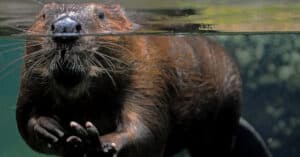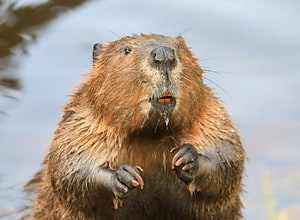Beavers and groundhogs are both relatively common sights across much of the United States, and they aren’t always that easy to tell apart. Driving down the road and catching a flash of a small brown animal on the treeline isn’t the best of circumstances for identifying them! Let’s take a look at these interesting creatures and learn, in detail, the exact things that make them different.
Comparing a beaver and a groundhog
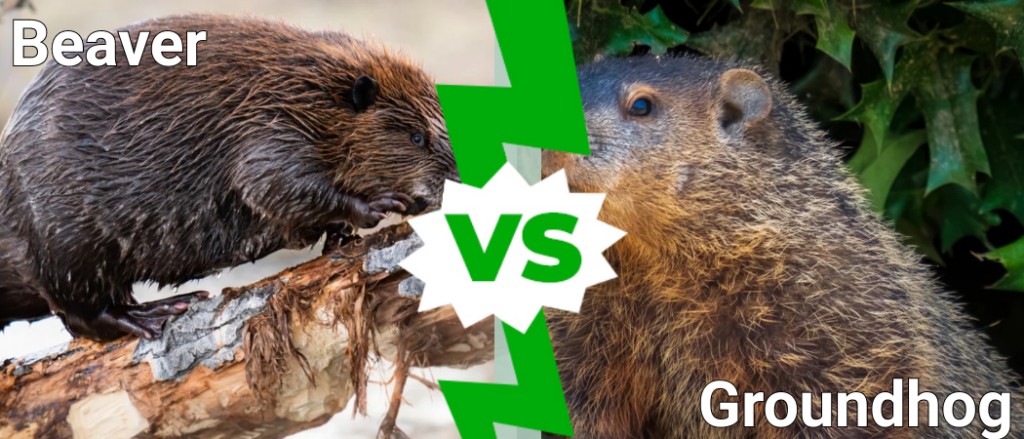
| Beaver | Groundhog | |
| Size | Weight: 35lbs – 60lbs Length: 31in – 47in | Weight: 10-12 lbs Length: 2 feet |
| Diet | Varies by season. Mostly leaves, grasses, inner bark, and roots | Omnivores, mostly grasses, plants, flowers, shrubs, and vegetables |
| Habitat | Semi-aquatic animals that live near rivers, lakes, ponds, streams, and marshes | Forest, woodlands, suburban gardens |
| Range | All of North America, was introduced to Europe | Most of North America, east of the Mississippi |
| Evolution | Rodents that belong to the suborder Castormorpha, ancestors came to North America 12 million years ago | Rodents that belong to the Marmota Genus |
Key Differences Between Beaver vs Groundhog
The greatest differences between a beaver and a groundhog lie in their size, habitat, and diet. Beavers are larger than groundhogs by a significant amount, although groundhogs are likely the largest marmots in the world. Additionally, the habitat that the two live in is drastically different. Beavers are semi-aquatic animals that require a water source to live, while groundhogs are terrestrial animals that mostly live in underground burrows. Finally, the diets of a beaver and a groundhog are different. Beavers are famous for their woody appetites and eat the inner bark of a variety of trees. Groundhogs eat mostly grasses, flowers, shrubs, and crops.
While these are the most significant differences, there are a few more that can help you distinguish between the two. Let’s explore these differences, along with the primary ones, below.
Beaver Vs Groundhog: Size
Although both beavers and groundhogs are considered rodents, they aren’t the small animals we are used to imagining. Both animals are relatively large mammals that are comparable in size, although one is generally larger. Beavers are the larger of the two, weighing between 35-60 lbs and measuring between 31-47 inches long. Their size makes them the second-largest rodent in the world, only behind the capybara.
Groundhogs aren’t small either, just smaller than a beaver. On average, groundhogs can weigh between 10-12 lbs and measure up to 2 feet long. Groundhogs belong to the Marmota genus or the common group of species known as marmots. Among marmots, the groundhog is the second-largest, only behind the hoary marmot.
Beaver Vs Groundhog: Diet
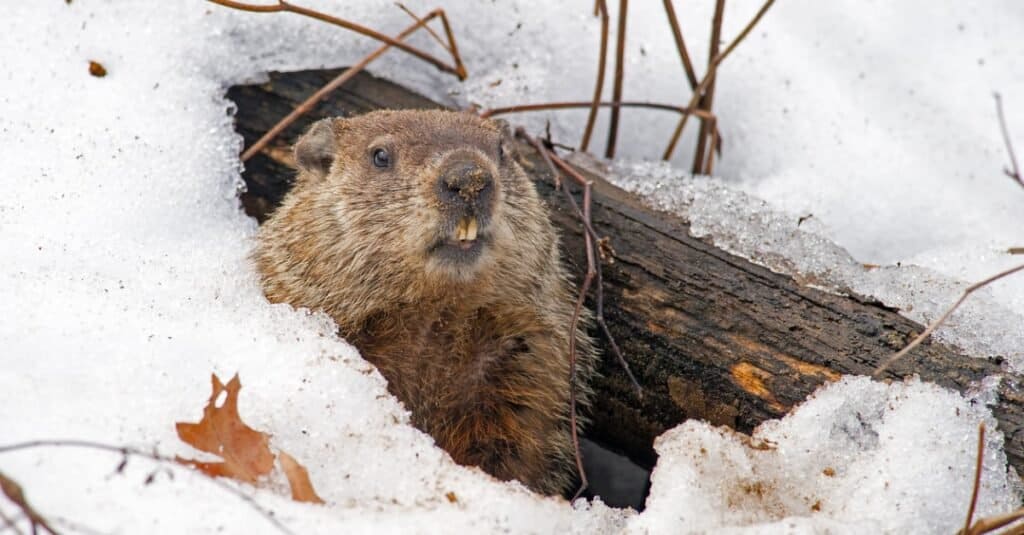
Beavers eat the soft inner bark of trees while groundhogs eat grasses and flowers.
©iStock.com/BrianEKushner
The diets of the beaver and groundhogs are similar, but there are a few key differences that set them apart. Beavers are primarily herbivorous, and their diet depends on the season. In the spring and summer, they mostly feed on water-based plants – things like sedges, water lilies, rushes, and cattails. During the fall and winter, they switch to their more “famous” diets of trees. Although it’s commonly believed that they eat wood, beavers only actually eat the cambium section of a tree, the soft inner bark that contains much of the nutrients. The common trees that beavers target include aspen, birch, oak, dogwood, willow, and alder.
Groundhogs are mostly herbivorous but are known to eat small insects, technically making them omnivores. Some of the most important food sources for groundhogs are dandelion, coltsfoot, and clover. Grasses and flowers make up large portions of their diets. Aside from the primary grasses they consume, they are also known to eat buttercup, berries, buckwheat, wild lettuce, and alfalfa. Additionally, they eat small animals and bugs like grubs, grasshoppers, snails, and even baby birds (when they can find them).
Beaver Vs Groundhog: Habitat
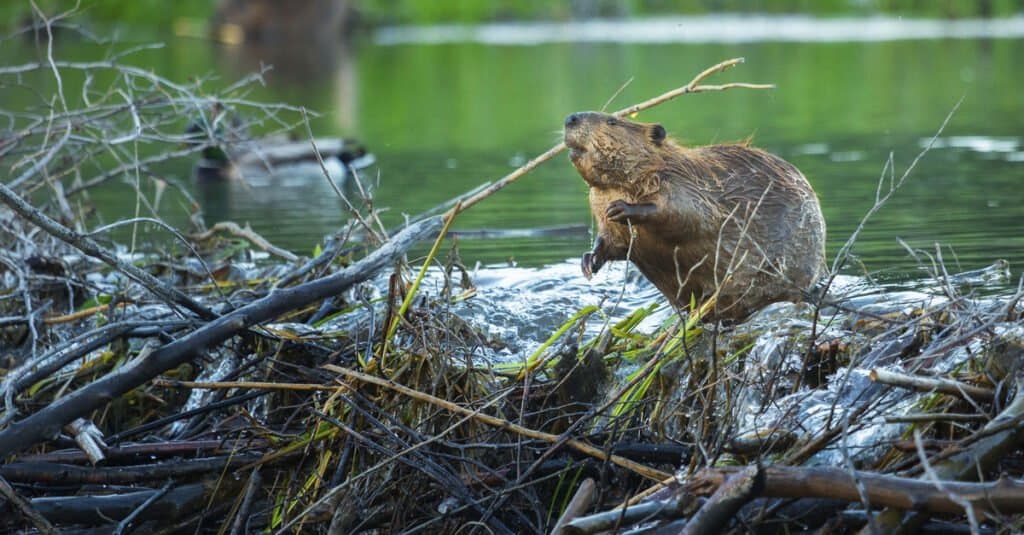
Beaver are semi-aquatic animals that live most of their lives in the water. Groundhogs are terrestrial animals.
©Chase Dekker/Shutterstock.com
Beavers are very predictable when it comes to their habitat since they are semi-aquatic creatures. They are always found near water, preferring streams, rivers, marshes, and ponds. Their habitat needs to have an ample food supply, mostly aquatic plants and trees, in order to support them. Beavers are incredible terraformers, often turning streams and river ecosystems into large watersheds and marshlands through their dams and mass construction. Beavers are essential to their habitat, often acting as engineers that create large swaths of specialized land for hundreds of different species.
Groundhogs are also predictable in where they can be found. They generally prefer fields, meadows, and open areas of land, usually near a tree line. They burrow and make dens in well-drained soil, often switching between dedicated winter and summer dens. They are also known to burrow near gardens and buildings, causing crop loss and structural damage.
Beaver Vs Groundhog: Range
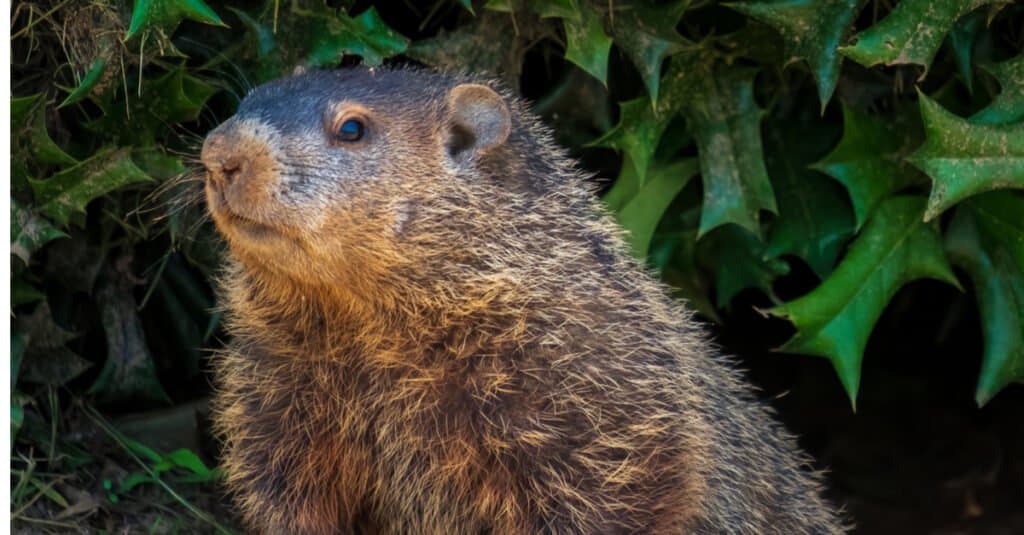
Both beavers and groundhogs are found across the United States and into Canada.
©samray/Shutterstock.com
Both the beaver and the groundhog have large ranges, not just in the United States but across Europe. There are two primary species of beaver, the North American beaver, and the Eurasian beaver. The North American beaver lives in almost every state of the US and well into most of Canada. The Eurasian beaver lives across most of Europe and into Asia, mostly by way of Russia.
Groundhogs are native to the United States. Their range goes as far south as Alabama and into Florida and stretching north, well into Canada. There are multiple species of marmot in the United States, all with their own preferred regions. Groundhogs generally stay east of the Mississippi and stretch far north into Canada. They do extend west, but only north of the border between the US and Canada.
Beaver Vs Groundhog: Evolution
The evolution and taxonomy (scientific naming method) give us some ideas as to how well related these two species are. Both beavers and groundhogs are rodents, but they diverge right after that. Beaver are rodents that belong to the genus Castor, of which they are the only remaining animals. There are two species of beaver remaining, the North American beaver and the Eurasian beaver. The most recent ancestor of beaver likely came from Eurasia around 12 million years ago.
Groundhogs are also rodents, but they separate into the genus Marmota, making them a marmot. There are 15 different species of marmot, most of which live in the United States. Groundhogs go by many names, including woodchuck, whistlepig, thickwood badger, and even land beaver.
The photo featured at the top of this post is © P Harstela/Shutterstock.com
Thank you for reading! Have some feedback for us? Contact the AZ Animals editorial team.





